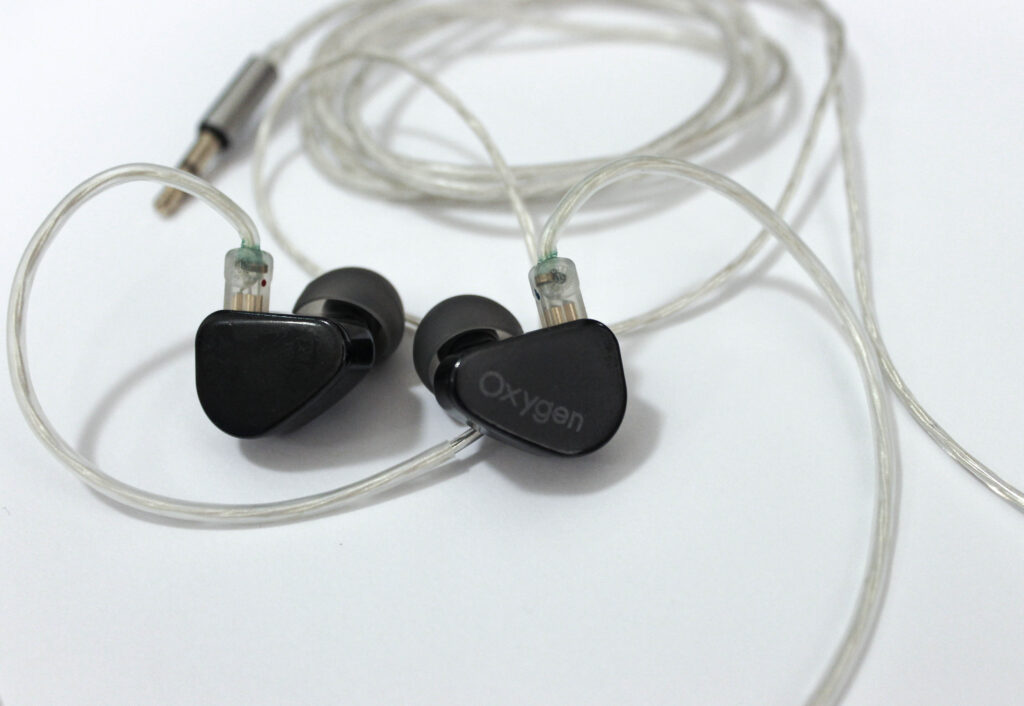Pros: Build quality, Packaging, Attention to details/technical abilities, Well tuned with great extension, Soundstage/Imaging/Tonality
Cons: Fit and short nozzle
Driver Setup: 1 Dynamic Driver
Price: $280 USD
Intro

Disclaimer: This review set is a demo set graciously lent to me by Daniel at Oardio and the review is written of my own accord and all thoughts are my own. The Tanchjim Oxygen is available for purchase from Oardio through their website should you find yourself interested in a pair.
This is a review for the Tanchjim Oxygen the older brother of the Hana, the “yin” of the “yang” that we reviewed previously. The Oxygen was Tanchjim’s earliest flagship model and established a name for itself with its tuning and sonic performance. With the Hana, we shall see how the former fares against the new kid in the block as well.
Accessories and Build Quality (Score: 9/10)

Very similar to the Hana except for the colourway, the Oxygen also comes in a cube-shaped box which also follows the concept of the Oxygen itself that lies within. The overall unboxing experience felt rather premium but slightly less fancy than the Hana which I do not really fault it as it was an earlier model. It comes with a nice leather case, 2 sets of ear tips and 2 sets of cables which I appreciate a lot as they really do feel like a complete package and everything you might need.
Build wise, the IEM itself is made out of metal and definitely capable in terms of durability and toughness when it comes to knocks and bumps but however, it is quite susceptible to scratches which may affect its aesthetics but in terms of quality, tanky-ness, and quality checks, the Oxygen scores!
Fit (Score: 7/10)
As per the majority of the people that had the Oxygen, I too have some fit issues and that is primarily due to the physical shape and design of the IEM itself. Its housing gets in the way of my Tragus (a physical part of the ear) which was my main source of discomfort, followed by the relatively shorter nozzle which can be solved by tip rolling. Although it is not a deal-breaker, it certainly took off some points in this region and of course, shorter listening sessions due to how my ears get physically tired from wearing these for long periods. I would even classify this issue as the infamous Achilles heel of the Tanchjim Oxygen which you will see in many other reviews as well.
Sound (Overall Score: 9.0/10)
I find the Oxygen to be one of the better tuned IEMs that is somewhat Harman-ish, having a natural presentation, an above-average soundstage, as well as accurate imaging capabilities, really impressed me whenever I listen to them.

Frequency Response of the Oxygen
Sources used
- Ibasso DX120
- IPhone XR
- Atom DAC and AMP
Music and Albums, I listened to
- Alan Walker
- Billie Eilish – When we all fall asleep, where do we go?
- Tchaikovsky 1812 Overture
- Cigarettes After Sex
- One Republic – Dreaming Out Loud
- Kodaline
- Keane – Fears and Hopes
- Nino Rota – The Godfather OST
- Fedde Le Grand – Cinematic
- ARTY
- Halo OST
- Czardas
- Lauv
- Scary Pockets
- Hans Zimmer
- Aladdin OST
Bass (Score: 9/10)
You can really feel the sub-bass rumbling away on the Oxygen, giving that deep baseline that creates that feeling of being “filled” and not lacking in any way. Mid-bass is also well articulated, punches and hits are impactful and agile at the same time. Listening to “Halo 2 OST”, drums are bass guitars really shine on the Oxygen where there aren’t any bass bleed, good punch and rumble that goes well with epic wartime genres. The Oxygen’s bass performance (details and separation) is impeccable, and I really enjoyed listening to it! Good job Tanchjim!
Mids (Score: 8.5/10)
The mids on the Oxygen doesn’t sound recessed or whatsoever, vocals still sound natural and spacious in the sense that they don’t sound distant but having that panorama effect. I would like to point out the Oxygen’s attention to detail here which might make it sound slightly sterile. Another plus point that really made the Oxygen an absolute joy to listen to is partly due to a relatively balanced upper-midrange gain which unlike many other offerings, does not have an overly emphasised pinna gain that makes it overly shouty. Again, it is a matter of preference, but it is one of the traits I appreciate on the Oxygen.
Treble (Score: 9/10)
Treble performance is applaudable as well as it possesses great extension, well-refined as well as an airy presentation. I did not detect any sibilance nor harshness in this region, but I do feel that its attention to detail tires me out after an hour or so. Not really a con but just my thoughts to you readers that may help you understand more about the Oxygen. I would classify its treble as energetic, detailed and refined that will satisfy most audiophiles’ cravings for treble.
Overall

The Oxygen nailed most areas right and on top of that, they have an impressive soundstage and imaging capabilities that you can find in higher-priced offerings. Tonality and balance-wise they do sound balanced and doesn’t sound too skewed to either end. Timbre wise I do feel that brass instruments especially trumpets may sound too forward sometimes and hence unnatural when listening to “The Godfather OST”. To sum it up, it is one of the best single dynamic driver IEMs that I heard so far.
Comparisons
Vs Tanchjim Hana (Review here)

Although the Hana resembles much like the Oxygen, it does sound brighter in its upper midrange and hence more likely to cause fatigue after long listening periods. Although the Hana is significantly more affordable, I would prefer the Oxygen purely due to sonic preferences and a more robust tuning. The Hana is no slouch here in terms of other sonic attributes, but I do prefer a less fatiguing upper midrange which the Oxygen has which explains my choice here.
Vs Sony MDR EX800ST (Review here)

Against one of my favourites, the EX800ST does have a much better fit, causing much lesser discomfort as compared to the Oxygen. The lows are not as refined on the EX800STs, but they are very competent in terms of tonality and linearity as compared to the Oxygen. The mids of the EX800ST are relatively more forward and sounds more accurate and detailed in its midrange/vocal’s capabilities as compared to the Oxygen. The Oxygen does beat the Sonys by a mile in its treble, having more extension and sounds way more refined/less grainy as compared to the EX800ST.
I find myself stuck in deciding where do I lean towards between the Oxygen and the EX800ST as I much prefer the flat tuning of the EX800ST but at the same time an adoration for the treble of the Oxygen. To summarise, I would prefer the EX800ST due to fit issues but at the same time, I would disagree with myself because of how well the Oxygen sounds.
Conclusion

In conclusion, although much pricier as compared to the Hana, the “Yin” manages to hold its ground and maintain its status of equals in terms of price to performance with the Oxygen being better tuned as compared to the Hana. The Tanchjim Oxygen was truly an enjoyable experience with good sonic capabilities and versatility that can satisfy most critical listeners and handle most genres but only to a fault in its fit issues where it causes some discomfort. If you can overcome the fitting problem, you might be looking at a winner here with great packaging, build and sound which sets many other IEM makers to shame.
Click HERE for our grading list for earphones
